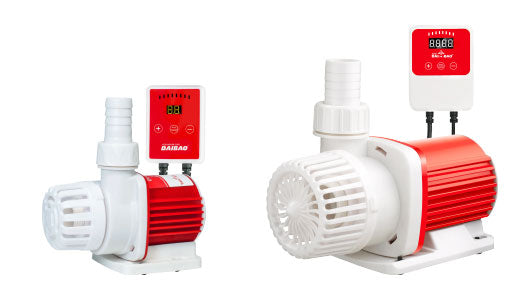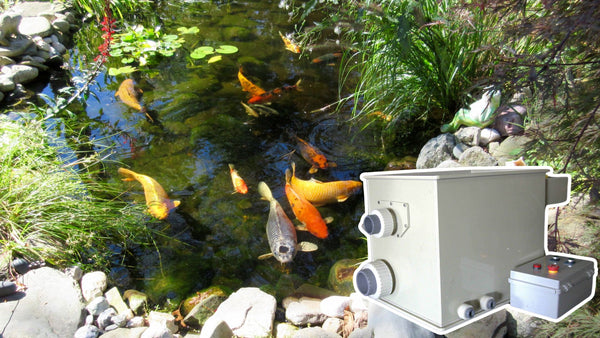.png)
Introduction
Koi pond filtration is essential for maintaining a healthy aquatic ecosystem and clear water in koi ponds. A robust filter system removes debris, improves water quality, and supports the overall health of valuable koi so they can thrive in a visually appealing water garden. Many pond enthusiasts compare their installation to setups in a 100 gallon reef tank, drawing inspiration from similar marine system techniques. This article covers how to understand your koi pond filtration requirements, select and install the optimal filter system, and perform proper maintenance for lasting performance. It provides professional insights for pond owners, water garden enthusiasts, and aquatic supply professionals to make informed decisions about equipment such as pumps, valves, check valves, and air pumps, while examining elements like backwashing and bacteria control.
Understand what is Koi Pond Filtration System
Effective koi pond filtration is the foundation for a stable, thriving aquatic environment. This section highlights key factors in water quality and mechanical filtration needed for various pond setups.
Achieving Clear Water With a Koi Pond Filter System
Clear water enhances the pond’s visual appeal and minimizes harmful algae and bacteria. High-performance filters capture debris and use biological processes to break down organic matter. This trap-and-decompose mechanism helps lower ammonia levels and maintain a balanced water chemistry essential for koi health. Efficient systems often pair mechanical filtration with ultraviolet clarifiers, and many experts recommend a flow rate of at least four to six times the pond’s volume per hour to ensure continuous purification.
Promoting Koi Health Through Superior Filtration
A superior filtration system removes impurities and stabilizes water parameters, reducing stress on koi. Regular removal of decaying organic matter prevents the buildup of harmful bacteria that elevate ammonia and nitrite levels. Well-maintained filters provide a habitat for beneficial bacteria that naturally detoxify the water. Combined with UV clarifiers that target pathogens, these systems help koi maintain better coloration, growth, and overall vitality.
Calculating the Correct Filter System Size for Your Koi Pond
The proper filter system size depends on the pond’s volume, measured in gallons, and should circulate the entire volume four to six times per hour. For instance, a 1,000-gallon pond requires a filter processing between 4,000 and 6,000 gallons per hour. Fish load, aquatic vegetation density, and additional features such as waterfalls all influence the proper capacity. Consulting sizing charts and manufacturer data is recommended to tailor the system to your specific needs, including allowances for seasonal fish load variations.
Selecting the Optimal Filter System for Your Koi Pond
The right koi pond filter system is crucial for long-term pond clarity and fish health. This section provides a concise comparison of system types and important factors to consider when matching system capacity to your pond volume.
Comparing Mechanical, Biological, and UV Filter Systems for Koi Ponds
Mechanical filters use sponges, meshes, and skimmers to remove solid debris. Biological filters provide a surface for beneficial bacteria that convert toxic compounds into less harmful nitrates. UV filters sterilize water by disrupting pathogens. Combining these three techniques in a multi-stage system ensures immediate clarity and long-term water stability. Advanced systems may include a bypass mechanism to adjust UV exposure according to seasonal or water quality needs.
AquadreamUSA's Advanced Koi Pond Filter System Solutions
AquadreamUSA offers advanced systems that combine high-capacity pumps, innovative biological media, and integrated UV clarifiers to maximize water turnover and clarity. Their modular design allows for component upgrades—such as additional pre-filters—to meet changing pond demands. Praised for durability, energy efficiency, and ease of maintenance, these systems are favored by professional water garden designers and serious koi enthusiasts for their performance across varied environmental conditions.
Choosing a Pre-Filter for Your Koi Pond System
Pre-filters protect the main system from excess debris by capturing leaves, twigs, and other particles before they cause clogs. Made with high-grade mesh materials, they maintain smooth operation of mechanical and biological filters, reducing maintenance frequency and extending component life. A properly integrated pre-filter can reduce overall cleaning time significantly while ensuring optimal water flow.
Key Components of an Efficient Koi Pond Filter System
An effective koi pond filter system is built from multiple interconnected components that work together to manage water quality and pond health.
The Role of Pumps in a Koi Pond Filter System
Pumps drive the circulation needed for every drop of water to pass through the filtration stages. A high-quality pump must deliver consistent flow rates and pressure for effective mechanical, biological, and UV filtration. Variable-speed pumps offer adjustable flow rates that respond to seasonal temperature changes, reduce energy consumption, and extend the life of the pump while minimizing noise.
Understanding Filter Media for Your Koi Pond System
Filter media form the core of biological filtration, providing surfaces where beneficial bacteria can thrive. Options include sponges, bio-balls, ceramic rings, and foam blocks. High-density media support larger bacterial populations, improving the breakdown of fish waste and organic matter. Regular monitoring and cleaning or replacing these media are essential to prevent clogging and maintain system efficiency.
Integrating Skimmers and Bottom Drains With Your Filter System for Koi Pond
Skimmers remove surface debris like leaves and twigs, while bottom drains capture heavier particles settled at the pond’s base. Strategically positioned skimmers along pond edges and centrally located bottom drains work together to lessen the load on mechanical and biological filters. This integration is vital for maintaining overall water quality and reducing maintenance frequency.
Essential Supplies Turn Your Koi Pond Amazing
Having the right supplies on hand is critical for both routine maintenance and quick repairs. This section reviews key supplies needed to support an efficient koi pond filter system.
Quality Water Pumps for Koi Ponds
High-quality filter media, including sponges, bio-balls, and ceramic rings, are essential for maximizing bacterial colonization and maintaining water quality. Upgrading to premium media can improve ammonia conversion and reduce maintenance frequency, as supported by various pond management case studies.
Water Conditioners and Treatments for Filtered Koi Ponds
Water conditioners work in tandem with the filter system to maintain optimal water chemistry. Dechlorinators neutralize chlorine and chloramines in tap water, protecting the biological media. pH stabilizers and enzyme-based treatments help prevent drastic fluctuations and enhance the breakdown of organic waste, ensuring a balanced aquatic environment.
Tables
Below is a table summarizing the key components and their benefits in a koi pond filter system:
|
Component |
Function |
Key Benefit |
Typical Replacement Cycle |
|
Mechanical Filter |
Removes debris and particulate matter |
Immediate water clarity |
Weekly during heavy load |
|
Biological Filter |
Provides habitat for beneficial bacteria |
Stable conversion of toxic waste |
Every 6-12 months maintenance |
|
UV Clarifier |
Sterilizes water by disrupting pathogens |
Prevents algae and bacterial outbreaks |
Annual bulb replacement |
|
Pre-Filter |
Captures large debris before main filter |
Reduces clogging of main filters |
Monthly rinse |
|
Pump |
Circulates water through the system |
Maintains adequate flow rates |
As per manufacturer guidelines |
Frequently Asked Questions
Q: How often should I clean my koi pond filter system?
A: Routine mechanical filter cleaning is recommended weekly during heavy use, while biological media and UV components should be serviced or replaced every 6 to 12 months. Regular water testing guides the best cleaning schedule.
Q: What flow rate is ideal for a koi pond filter system?
A: The system should circulate the total pond volume at least four to six times per hour. For example, a 1,000-gallon pond requires a flow rate of 4,000 to 6,000 gallons per hour to effectively remove debris and waste.
Q: Can I use a single filter system for both small and large koi ponds?
A: While small ponds might work with a basic integrated filter, larger or heavily stocked ponds benefit from multi-stage systems that combine mechanical, biological, and UV components to match the pond size and maintain water quality.
Q: Is UV clarification necessary for effective koi pond filtration?
A: UV clarifiers are not mandatory but are highly recommended if algae or pathogenic bacteria levels are problematic. They control infections and maintain water clarity by sterilizing the circulating water.
Final Thoughts
A well-designed koi pond filter system is essential for clear water and healthy koi. By understanding your filtration requirements, selecting the right components, and following a structured installation and maintenance plan, you can create a balanced aquatic environment. Regular upkeep not only preserves water quality but also extends the lifespan of your system, ensuring that both koi and pond owners enjoy a beautiful, thriving water garden. Proactive pond management practices lead to a vibrant, successful aquatic ecosystem.



 Aquariums & Supplies
Aquariums & Supplies


 Coral Reef Aquariums & Supplies
Coral Reef Aquariums & Supplies


 Garden & Hydroponics & Landscape
Garden & Hydroponics & Landscape


 Ponds & Fountains & Waterfalls
Ponds & Fountains & Waterfalls


 Drum Pond Filter
Drum Pond Filter



 Community
Community



 Help Center
Help Center







